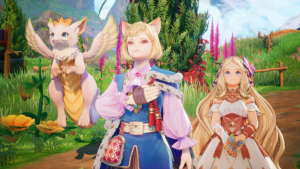The popular MMO title EVE Online is working together with scientists to save them over 330 years of COVID-19 research.
You might never have thought that a widely popular MMO game like EVE Online could be helping scientists research and fight COVID-19, but that’s where you’d be wrong. Through Project Discovery, EVE Online players are able to participate in research for COVID-19 and historically other areas of scientific research through in-game tasks and minigames. Project Discovery has been around since 2016, and for just about a year now has been focused on helping scientists research COVID-19.

“I believe this is a very important project, almost like a mission, to show the world that this works. Ultimately, the more game devs that jump on board, and the more gamer communities that join, the more we are progressing forward to build practically an unlimited human computation engine.” This comes from Attila Szantner, CEO and co-founder of Massive Multiplayer Online Science via IGN, who originally reported the story.
EVE Online is a sci-fi MMO where players can participate and interact with an ever growing universe. That continuation and community is exactly what makes EVE Online the perfect candidate for what Project Discovery has been doing since 2016. With thousands of players in the game every day, they are able to save scientists an incredible amount of time. Just within the last year of Project Discovery’s focus on COVID-19, players have done the equivalent research work of approximately 330 years.
It all happens with mini-games that players can complete, and each new rank associated with the mini-games provides players with in-game rewards like the Biosecurity Response Team Mask at rank 5. The COVID-19 specific mini-game is a game where players simply point-and-click to create polygons around a mass of clusters.
The success of Project Discovery makes Szantner hopeful that more developers will be open to integrating it into their games and further the research of multiple different fields of study. “It was a miracle to pull off Project Discovery. Now it’s proven and now we can show it works. Now we can show it brings value to gaming communities, game development companies, and science. I think it’s a much easier decision for game developers to come in and implement it into the games… and I hope to see more of it happen in the future.”-Attila Szantner via IGN.



